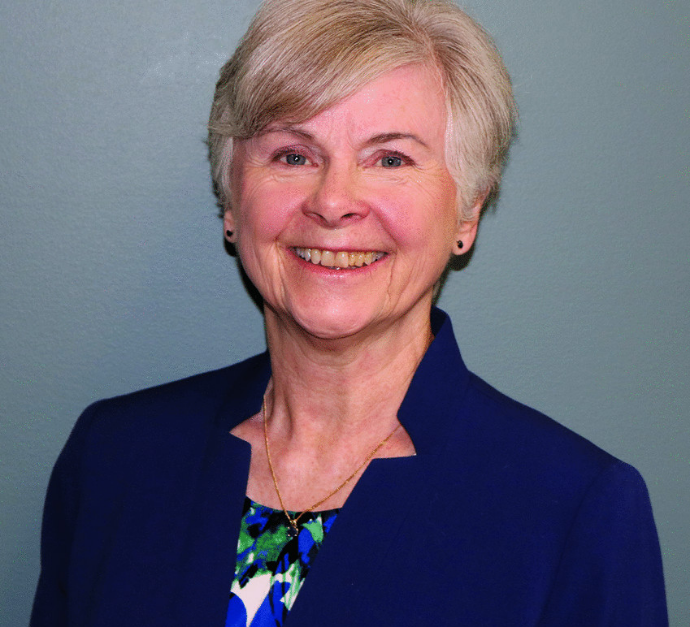
Diverging employment pathways
among young adults
The essays in this analysis paint a disturbing picture of economic mobility in the United States. Our goal was to explore the extent to which young people from socioeconomically disadvantaged backgrounds achieve steady, decent-paying employment by their early 30s—and we found that nearly 60% did not. We identified four employment pathways, two of which (accounting for 43% of the study population) lead to varying degrees of economic success. Another pathway (36% of the study population) leads to working poverty and the last one (22% of the study population) leads to destitution.
Using multivariate analysis, we identified factors predicting membership in each of the different earnings groups. Factors associated with membership in one or both of the higher-earning groups include higher education, military service, union membership, job-related training, and working in a non-service sector occupation at age 25. However, higher education did not drive membership in the highest-earning group, suggesting the limits of education as a strategy for upward mobility.
Factors associated with belonging to a lower-earning group include incarceration, work-limiting health conditions, and prolonged unemployment. Gender and race also predict group membership, even after controlling for other factors relevant to employment. Women have a greater probability of belonging to a lower-earning trajectory group than men, and Black adults are more likely than white and Latino or Hispanic adults to belong to a lower-earning group. Nonetheless, low earnings are not a problem only for people of color. Given their relatively large share of the total population, white people still make up the largest shares of the two lowest-earning groups.
Findings in brief
We identified young adults who experienced at least one form of socioeconomic disadvantage in adolescence, and then, using trajectory analysis, examined their employment pathways during ages 18 to 31. We identified four distinct groups among the study population:
- Group 1 (22% of the study population) lives in extreme economic hardship. At age 30, more than half live in poverty and they have very low employment rates.
- Group 2 (36%) is the working poor. At age 30, their average annual earnings are $19,000 and they receive few employer benefits. Less than half work full time/year-round in any given year, reflecting the churn that is characteristic of the low-wage labor market. More than half live below 200% of the federal poverty line—a common measure of economic insecurity.
- Group 3 (34%) appears to be economically comfortable. At age 30, their average annual earnings are $42,000, and almost all receive the three employer benefits included in the analysis (paid leave, health insurance, and retirement). Almost none live in poverty.
- Group 4 (9%) is a clear economic winner. At age 30, their average annual earnings are $97,000, and almost all receive the three employer benefits included in the analysis: paid leave, health insurance, and retirement.
To offer young people better options, we need better policies and programs
Young adulthood is a time of transition, potential, and vulnerability. Following young people from their teens to age 30 allows us to assess a range of factors shaping their lives for better and worse. The barriers to opportunity we identify are daunting in their number and complexity. Educational systems, labor markets, and social policy have failed to provide the necessary conditions for all young people to thrive as they move into adulthood.
The data points to the need for multiple, ambitious reform efforts across the following areas:
Criminal justice
The lowest earners in our analysis have staggeringly high rates of incarceration. Among the study population as a whole, 26% of Group 1 has been incarcerated. When we did separate analyses by gender and race, we found a history of incarceration among 36% of Black people in Group 1 and 43% of men in Group 1.
The number of people in state or federal prisons has increased dramatically over the past few decades, from 307,000 in 1978 to more than 1.4 million in 2019—a 365% increase. Prison has replaced college or the military as a formative institution for many young people. More than 600,000 people return to their communities from federal and state prison every year, and at any given point in the four years after their release, no more than 40% of previously incarcerated people are employed.
As Brookings colleagues have noted, “The stigma of a criminal record is one of the most important and well-documented barriers to successful re-entry and re-integration” to life outside of correctional facilities. This analysis provides one more data point showing the immense harm that the criminal justice system causes to society. Rather than taking a piecemeal approach to reform, we need to reimagine the entire system, including policing, courts, prison, re-entry, and community supervision—and do so with a focus on the safety, health, and well-being of communities rather than surveillance and control.
Health care and disabilities
Health problems are clearly associated with low earnings and few fringe benefits. It is a notable indicator; serious health problems are more common among older adults, yet here we see it interfering with employment among people in their 20s. Moreover, health problems and disabilities are some of the most commonly cited reasons for not working. As labor force participation has decreased over time, some researchers have pointed to health problems as a potential cause. Better access to high-quality health care is clearly part of the solution.
Additionally, even though health conditions do not automatically equate to disabilities, they do overlap, and people with disabilities have very low rates of employment. More than 30 years after the passage of the Americans with Disabilities Act, there is still much to do to increase employment and economic self-sufficiency among people with disabilities. This includes addressing hiring discrimination, making workplaces more accessible and welcoming to people with disabilities, and building more robust workforce development and job placement services for people with disabilities.
Education and training
The low levels of education among workers in the lowest-earning trajectories are stark, with many lacking a high school diploma, let alone a postsecondary degree. Adolescents and young adults face a postsecondary education landscape that can be confusing, expensive, and hard to navigate. Moreover, enrollment is only half the battle—graduation is the goal. Only 60% of students who enroll in a two- or four-year college or university earned a degree within six years, prompting some researchers to describe incoming students as facing “coin-toss odds of success.” Leaving school without a credential is the most common outcome for community college students, as well as for students with low test scores who enter four-year schools. In these cases, students forfeit time and earnings, often acquire debt, and have no guarantee of an earnings payoff.
Approaches to promote college completion include dual enrollment or early college programs, in which high school students take college courses. The City University of New York’s ASAP program requires community college students to attend full time and provides a range of academic, financial, and personal supports. Additionally, “guided pathways” reforms have been implemented at community colleges nationwide, designed to offer clearer sequences of courses in particular fields of study coupled with stronger advising.
Meanwhile, high-quality job training programs can match young people with employment in their local job markets and equip them with the skills (hard or soft) they need to succeed in the workforce and obtain good jobs. Lastly, the evidence base for integrated student supports is growing, suggesting that education and training programs that address nonacademic and academic student needs are more successful than those that focus solely on academic or technical training.
Discrimination
Although this analysis did not assess the effects of discrimination, our findings about the lower earnings of workers who are female, Black, or Latino or Hispanic are consistent with other research suggesting discrimination plays a role. Simulation analyses also show that if Black and Latino or Hispanic children received the same benefit from their childhood and early adult experiences as white children, they would achieve higher educational attainment and lifetime earnings, particularly for Black men.
As a starting point, we need stronger enforcement of anti-discrimination laws regarding the hiring, promotion, and pay of people of color and women. This requires the federal Equal Employment Opportunity Commission to have adequate resources and staff—a lack of which has been a problem for decades.
Child and family policy
Early childbearing also increases the likelihood of falling into the lowest-earning trajectory. While the teen birth rate has declined substantially over recent decades, unplanned childbearing in the teens and early 20s is still high. Policies and funding are needed to expand accurate education and greater access to reliable and affordable contraception, as well as paid leave and child care options for young people who have children so that they do not need to drop out of the labor force. Additionally, policies that promote success among parenting students could allow young parents to access the education and training they need to avoid some of the wage penalties of childbearing.
Unions
Union membership is associated with a better wage trajectory, which aligns with research finding the that unions promote higher wages. Yet union membership has declined steadily over the previous decades, from 20.1% in 1983 to 10.3% in 2021. But the majority of Americans support unions and labor organizing, and strikes have increased in the past year or so.
Recent votes to unionize at a New York City Amazon warehouse and numerous Starbucks stores may signal that union membership is on the upswing. This is a positive development given our findings, but labor laws are badly outdated and in need of reform in order for more workers to realize the benefits of collective representation, such as wage bargaining and protecting workers’ rights.
Military service
Military service is related to stronger labor market outcomes for people from disadvantaged backgrounds. However, recent analysis suggests that military recruits generally come from the middle of the income spectrum—neither the poorest nor the wealthiest families. Black people are slightly overrepresented among the active military, while white and Asian American people are slightly underrepresented. Military families also receive benefits such as subsidized child care, tuition assistance, and health care, which may offer additional wage benefits to disadvantaged youth in a system where such benefits are not widely available. (Young people in the analysis were automatically assigned all three benefits for the period for which they reported military service, regardless of the type of duty.)
The finding that military service is associated with being in a stronger trajectory group is both a credit to those young people who enlist and a cause for concern. The military is not meant to address the nation’s economic mobility woes: In a recent report from the National Commission on Military, National, and Public Service recommending strategies to bolster enlistment, the Commission described its main goal as meeting “national security and other public service needs.”
As for the institutions with a clear mission to help young people improve their economic circumstances—public education, postsecondary education, and job training—the trajectory analyses illustrate how these systems often fail to do so. Creating a strong pathway to economic mobility will entail, as a priority, strengthening these institutions so that they properly serve youth from disadvantaged backgrounds, and then making young people aware of a wealth of early career opportunities and service options, which may include military service.
The effects of COVID-19
Since the data available for this analysis ended in 2018, it does not account for the impact of the COVID-19 pandemic and its massive disruptions to almost every facet of daily life, including caregiving, education, employment, and health care.
COVID-19 cases and pandemic job losses disproportionately hit people of color, those with low levels of education, service sector workers, and low-wage workers. The economic and social fallout made it impossible to ignore long-standing problems such as the lack of paid leave and universal health insurance as well as the fragility of the child care system. Through the CARES Act and the American Rescue Plan, the federal government provided additional support to workers, families, and employers, but most of the provisions in these laws have expired.
As of the spring of 2022, the economy has gained back most of the jobs that were lost compared to February 2020. Workers are resigning and switching jobs at increased rates, and individuals and workplaces continue to navigate an environment in which exposure to COVID-19 remains a concern. Wages are growing, which is good news—but for workers who earned very low wages to begin with, a relatively modest increase will not necessarily lead to economic security, especially given the rise in inflation. While strong demand for workers may continue, it remains to be seen whether that will translate into lasting changes in wages, benefits, and overall job quality.
On the educational front, remote learning led to serious learning loss among K-12 students, and college enrollment is down sharply, especially at community colleges. High school teachers note they have not been able to provide the same level of college and career readiness counseling as before the pandemic, and many recent high school graduates report overwhelming levels of uncertainty, anxiety, and confusion about their future.
In short, young people have just experienced major educational and social disruptions and are setting forth in an extremely unsettled labor market. We will see the ripple effects for years, making this a critical time for increased investment and innovation.
Final thoughts
Some of the most powerful levers for change are the implicit beliefs and mental models that undergird explicit policies and practices. A key factor of our willingness to do the hard, slow work of system reform often goes unspoken and unexamined: our collective attitude toward young people, specifically those who are low-income, Black, or Latino or Hispanic. Do we see them as assets who can contribute to our collective future? What do we expect they can accomplish? Are we willing to invest in them? In turn, what can they expect from public services and civic institutions?
Helping young people prepare to engage in work and life as productive adults is a central and ongoing challenge for any society. The data presented here shows that the United States is failing at that critical task for too many young people, underscoring the urgent need for action.






